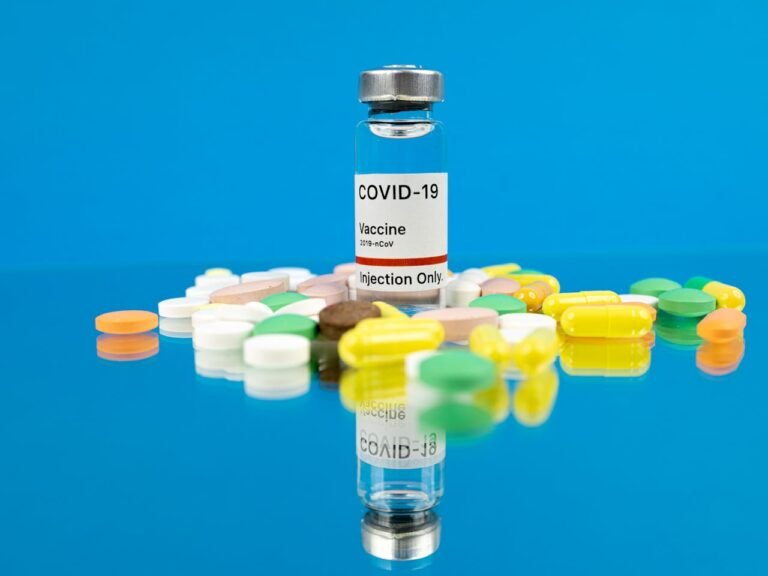Delix Therapeutics, a clinical-stage neuroscience company advancing a new generation of non-hallucinogenic neuroplastogens for the treatment of serious neuropsychiatric and neurodegenerative disorders, has announced the publication of a peer-reviewed study in ACS Chemical Neuroscience. The paper, titled “Zalsupindole is a non-dissociative, non-hallucinogenic neuroplastogen with therapeutic effects comparable to ketamine and psychedelics,” details the pharmacological and mechanistic profile of zalsupindole (DLX-001)—Delix’s lead compound.
Authored by Delix scientists and company co-founder David E. Olson, PhD, the research provides compelling evidence that zalsupindole, a first-in-class analog of 5-MeO-DMT, induces strong structural and functional neuroplasticity without producing the hallucinatory, dissociative, or psychotomimetic effects associated with traditional psychedelic compounds such as ketamine, psilocybin, or DMT.
A New Class of Neuroplastogens
Zalsupindole represents a breakthrough in neuroscience and psychopharmacology—a non-hallucinogenic neuroplastogen that promotes brain plasticity and repair of dysfunctional neural circuits while maintaining an excellent safety profile. This innovation supports Delix Therapeutics’ central mission: to create scalable, accessible treatments that address the root biological causes of mental illness rather than merely managing symptoms.
In a series of preclinical experiments, zalsupindole demonstrated robust neuroplasticity effects that rivaled or exceeded those of ketamine, psilocybin, and DMT. Key findings from the study include:
- Cortical neuritogenesis in vitro: Zalsupindole stimulated the growth of new neurites—projections from nerve cells essential for communication and connectivity.
- Increased dendritic spine density in vivo: Animal models showed measurable increases in dendritic spine density, a hallmark of enhanced neuroplasticity and synaptic health.
- Enhanced functional plasticity: Behavioral and electrophysiological markers indicated that zalsupindole strengthened neural circuitry in a manner similar to, or better than, first-generation psychoplastogens.
Mechanism and Pharmacological Profile
The study provides extensive receptor and pharmacokinetic data explaining how zalsupindole achieves its effects safely. Pharmacokinetic analysis revealed that zalsupindole is highly brain-penetrant, distributes rapidly, and clears quickly—properties favorable for both efficacy and safety.
Receptor binding assays showed that the compound acts as a low-potency partial agonist at 5-HT₂A and 5-HT₂C receptors, while selectively targeting serotonergic pathways and antagonizing 5-HT₂B receptors. This receptor activity contributes to its neuroplasticity-promoting power without triggering hallucinatory or cardiovascular side effects. The antagonism at 5-HT₂B receptors, in particular, suggests a favorable cardiovascular safety profile, a finding consistent with early human clinical data.
A Breakthrough in Non-Hallucinogenic Neuropsychiatric Treatment
“At Delix, we believe promoting neuroplasticity to repair dysfunctional neural circuits is the key to addressing a broad range of neuropsychiatric conditions,” said Dr. David E. Olson, co-founder and Chief Innovation Officer at Delix Therapeutics. “By systematically comparing zalsupindole to clinically effective, first-generation psychoplastogens like ketamine, psilocybin, and DMT, we’ve shown that our compound produces the same rapid and sustained neural benefits without hallucinations or dissociation. The data provide a clear path toward developing safe, effective, and scalable neuroplastogen therapeutics for people who need them.”
The company’s neuroplasticity platform has already generated thousands of novel, non-hallucinogenic compounds, each designed to safely enhance brain connectivity and resilience. The zalsupindole publication follows promising clinical milestones for Delix:
- In a Phase 1 clinical trial involving healthy volunteers, zalsupindole demonstrated a favorable safety and tolerability profile with no serious adverse events and no psychotomimetic or dissociative effects.
- EEG biomarkers confirmed CNS exposure and neuroplasticity activity, supporting its translation from preclinical to clinical efficacy.
- The company is now completing a Phase 1b study in patients with Major Depressive Disorder (MDD), aiming to confirm early signs of efficacy in a clinical setting.
Industry Recognition and Scientific Leadership
“Delix is honored that ACS Chemical Neuroscience has chosen to publish this landmark characterization of the first non-hallucinogenic neuroplastogen to reach clinical development,” said Mark Rus, CEO of Delix Therapeutics. “By deepening our understanding of neuroplasticity and the serotonergic system, we’re strengthening the case that non-hallucinogenic neuroplastogens can deliver the same rapid efficacy as psychedelics—but with greater scalability, safety, and accessibility.”
This latest publication builds on a growing body of research establishing Delix as a leader in the field of next-generation neurotherapeutics. The company’s findings have been featured in high-impact journals including Science, Cell, Nature, Molecular Psychiatry, Frontiers in Psychiatry, and the Journal of Medicinal Chemistry.
In recognition of its scientific innovation and commercial potential, Delix Therapeutics has been honored in:
- Chemical & Engineering News’ “Top 10 Start-ups to Watch”,
- Nature Biotechnology’s list of top spinouts, and
- Fierce Biotech’s prestigious “Fierce 15” list.
Toward a Safer, More Effective Future for Mental Health Treatment
The implications of Delix’s work are profound. Current psychiatric treatments often rely on either slow-acting antidepressants or hallucinogenic psychedelics that, while effective for some, pose accessibility and safety challenges. Zalsupindole’s profile—rapid-acting, safe, non-hallucinogenic, and neuroplasticity-driven—represents a paradigm shift for how mood and cognitive disorders could be treated in the future.
By separating the therapeutic benefits of psychedelics from their hallucinatory effects, Delix aims to make the advantages of neuroplasticity accessible to millions who could benefit from fast, durable relief without the need for psychedelic experiences or supervised dosing environments.
“Zalsupindole demonstrates that we can capture the full power of psychedelic-like neuroplasticity safely and reproducibly,” added Rus. “Our mission is to turn this science into scalable treatments that can transform how the world approaches mental health.”
As the company advances zalsupindole through clinical development, Delix Therapeutics continues to lead a new era in neuroscience—one where repairing and regenerating neural circuits becomes the cornerstone of mental health innovation.
About Zalsupindole (DLX‑001)
Zalsupindole (DLX-001) is a novel, non‑hallucinogenic, non-dissociative isotryptamine neuroplastogen currently being evaluated for the treatment of Major Depressive Disorder (MDD). Preclinical data has demonstrated that DLX-001 increases dendritic spine density on neurons in the prefrontal cortex and has rapid and enduring antidepressant-like effects in animal models after a single dose. Recent Phase 1 data has demonstrated that DLX-001 is associated with robust signs of CNS engagement and a favorable safety and tolerability profile, with no serious adverse events reported to date. Delix is completing a Phase 1b study in MDD patients.
About Neuroplastogens
Neuroplastogens are a novel class of potentially disease-modifying therapeutics for psychiatric and neurological conditions. These compounds promote rapid and sustained neuroplasticity in select neural circuits resulting in fast-acting therapeutic effects. Neuroplastogens are novel chemical entities inspired by compounds that are proving to be beneficial across a range of therapeutic areas including mood, anxiety, cognitive, and neurodegenerative disorders in addition to other synaptopathies. Leveraging our deep mechanistic understanding and unique drug discovery engine to generate distinct compounds, Delix seeks to bring to market a pipeline of neuroplastogens that aim to be the faster, stronger, and more effective medicines of the future.



